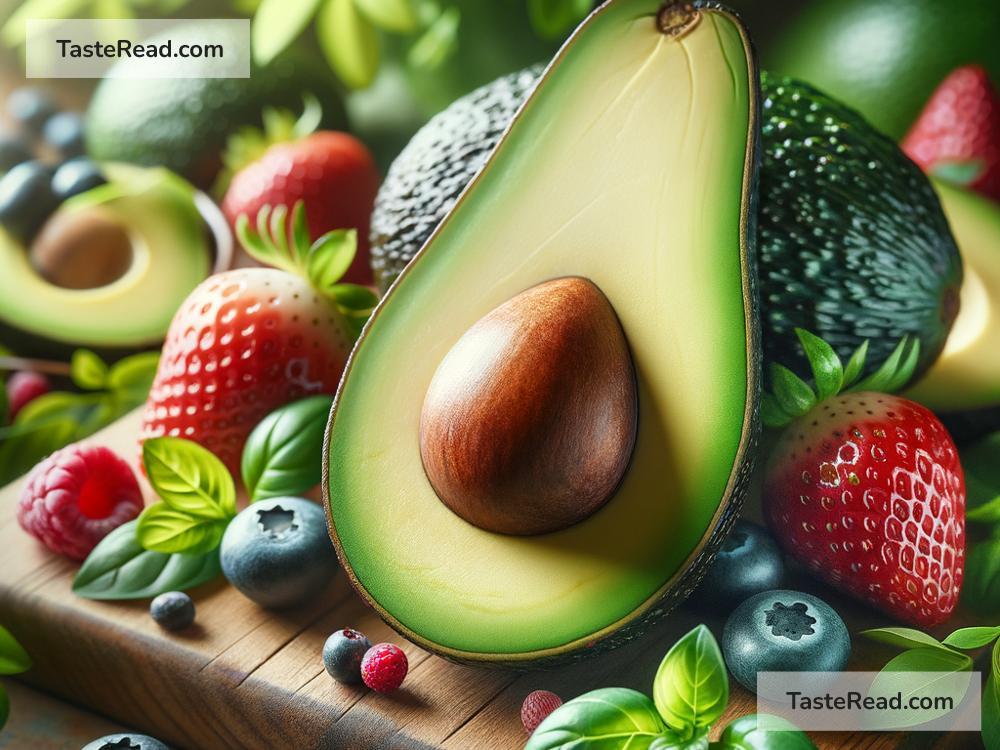Why Avocados Are Technically Berries: A Simple Explanation
Avocados are beloved around the world for their creamy texture, rich flavor, and versatile uses. Whether smashed onto toast, blended into guacamole, or sliced into salads, avocados have earned their spot as a superfood. But did you know that avocados are actually berries? Yes, you read that correctly! Avocados aren’t just fruits—they belong to the berry family. This surprising fact can leave people scratching their heads, but the explanation is simpler than you might think. Let’s dive into the science behind why avocados are considered berries, in terms anyone can understand.
What Makes a Fruit a Berry?
First, let’s take a moment to revisit what makes a fruit a fruit. Fruits develop from the flowering part of plants and contain seeds. When you eat a fruit, you’re consuming the part of the plant that helps it reproduce by protecting and dispersing its seeds.
Now, within the category of fruits, there are many subcategories, such as drupes (like cherries and peaches), pomes (like apples and pears), and—you guessed it—berries. Scientifically speaking, berries are a specific type of fruit. But here’s where it gets a little tricky: the scientific definition of a berry is not the same as the everyday definition.
To most of us, berries are small, juicy fruits like strawberries, blueberries, and raspberries. However, in botanical terms (the study of plants), a berry has a very specific definition. A berry is a fleshy fruit that develops from a single ovary of a flower, and it must have these characteristics:
- It is fleshy throughout – There shouldn’t be any hard layers like a stone or shell inside the fruit.
- It contains seeds inside the pulp – The seeds are encased within the softer, edible part of the fruit.
- It develops from one ovary – An ovary is the part of the flower that becomes the fruit.
So, a true berry is not determined by size or juiciness—it’s defined by its structure. This is why some fruits traditionally thought of as berries, like strawberries or raspberries, don’t count scientifically (they’re actually aggregate fruits, made from multiple ovaries). Meanwhile, fruits like bananas, cucumbers, and yes, avocados fit the scientific definition of a berry.
Why Is an Avocado a Berry?
Let’s apply these berry rules to an avocado and see how it measures up:
-
It’s fleshy throughout: Avocados are soft and creamy from skin to seed. There’s no hard pit encased in a shell like you’d find in peaches or cherries. The entire fruit is edible apart from the skin and the single large seed.
-
It contains a seed inside its pulp: If you’ve ever cut into an avocado, you know it has a big seed sitting in the middle of its green flesh. This is a key feature of berries—they must have seeds surrounded by soft pulp.
-
It develops from a single ovary: When an avocado flower is pollinated, its ovary grows into the fruit we call the avocado. Since it comes from just one ovary, it qualifies as a berry.
With all these characteristics checked off the list, avocados earn their scientific label as berries.
Why Don’t We Call Avocados Berries?
Despite being berries by definition, avocados are rarely referred to that way in everyday conversation. Why is that? Well, the simple answer is tradition and the way we perceive food. When people think of berries, they typically imagine small, colorful, juicy fruits that grow on bushes—like strawberries, blueberries, or blackberries. Avocados don’t match that picture. They’re larger, green, and have a tough outer skin. They don’t fit the “berry stereotype,” and over time, they’ve carved out their own identity as a unique, stand-alone fruit.
Moreover, avocados are often used in savory dishes like salads and dips, while berries are more commonly associated with sweet desserts, smoothies, and snacks. This difference in how we use them adds to the divide between avocados and other fruits we call berries.
Fun Avocado Facts You Didn’t Know
Now that you know avocados are berries, here are a few more fun tidbits about this superfruit:
-
Avocados are ancient: They’ve been cultivated for thousands of years, and evidence suggests they were a staple in diets as early as 5000 BCE in Central America.
-
They’re nutrient powerhouses: Avocados are packed with healthy fats, vitamins, and minerals, making them incredibly nutritious.
-
The name comes from “ahuacatl”: Avocado is derived from the Aztec word “ahuacatl,” which surprisingly means “testicle”—possibly due to the fruit’s shape.
Final Thoughts
It’s fascinating how science can reveal surprising truths about everyday foods. While the idea of avocados being berries isn’t likely to change culinary traditions, it’s still fun to know the facts. So, next time you’re enjoying your favorite avocado dish, you’ll have an interesting story to share: the creamy green fruit on your plate is actually a berry—and a pretty delicious one at that!


